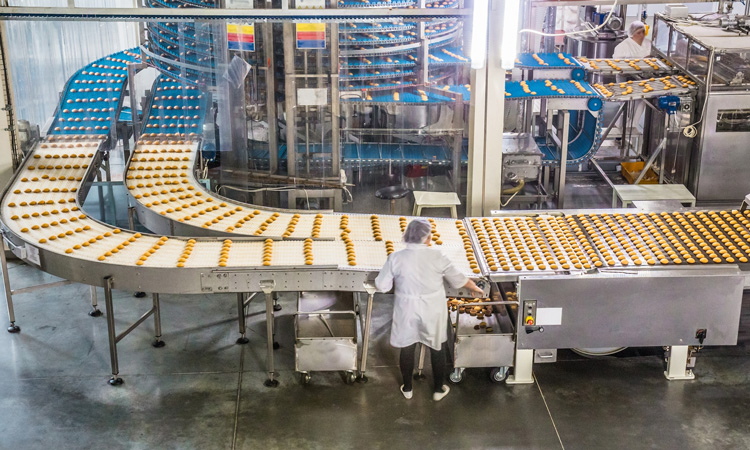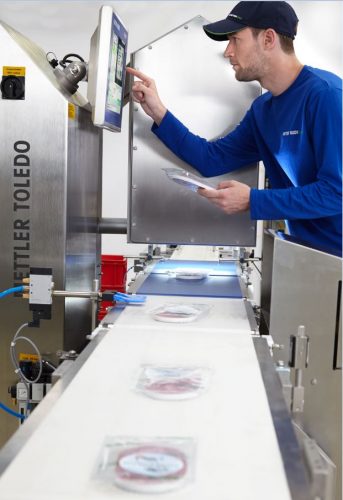Do you know your TDC from your TCO?
- Like
- Digg
- Del
- Tumblr
- VKontakte
- Buffer
- Love This
- Odnoklassniki
- Meneame
- Blogger
- Amazon
- Yahoo Mail
- Gmail
- AOL
- Newsvine
- HackerNews
- Evernote
- MySpace
- Mail.ru
- Viadeo
- Line
- Comments
- Yummly
- SMS
- Viber
- Telegram
- Subscribe
- Skype
- Facebook Messenger
- Kakao
- LiveJournal
- Yammer
- Edgar
- Fintel
- Mix
- Instapaper
- Copy Link
Posted: 28 July 2020 | Neil Giles | 4 comments
Neil Giles, Marketing Communications Manager, Mettler-Toledo Product Inspection, explains how packaged food manufacturers can measure the efficiency of their production lines by knowing the difference between Total Cost of Ownership and Total Delivered Cost.


Managing successful packaged food production lines often requires manufacturers to be able to operate within tight financial margins. For this purpose, a well-established metric in the industry is Total Cost of Ownership (TCO).
In simple terms, TCO takes into consideration the purchase price of a piece of equipment, as well as the operational costs it incurs over time. TCO is often used in procurement analysis when preparing business cases to secure additional capital expenditure to update food production lines, as TCO focuses on all costs directly related to the piece of equipment itself.
However, packaged food manufacturers are increasingly considering another metric to measure the overall productivity and effectiveness of their production lines: Total Delivered Cost (TDC).
What is the difference between TDC and TCO?
TDC looks into the total cost of manufacturing and delivering a product. This includes the sum of TCO (all costs directly related to the piece of equipment) and all operational costs, such as the physical product, packaging, labour for production and quality checks, waste product, waste packaging and transport.
A critical factor of successful and accurate metal detection on production lines is sensitivity
However it should be noted that as TDC takes into account operational costs, the metric can easily be affected by common issues on production lines, such as product rejects, having to change product set-ups manually, contaminants and downtime for maintenance purposes. While TDC is a more comprehensive metric for manufacturers to measure their overall productivity, it also means that their production lines need to be running at capacity and smoothly, with minimum hiccups and issues to keep their TDCs in check.
How can manufacturers protect their production lines?
Two main types of product inspection technology – x-ray inspection and metal detection – can help manufacturers reduce TDC. This is achieved by initiatives such as reducing unnecessary product waste and enabling the re-working of product and packaging. Some ways to reduce TDC include:
Minimising False Reject Rates (FRR) with x-ray inspection
In food production, the cost implications of high False Reject Rates (FRR) can be daunting and increase overall TDC. Every good product which is rejected leads to avoidable re-testing and production line re-working costs.
Two main types of product inspection technology – x-ray inspection and metal detection – can help manufacturers reduce TDC
For example, a snack manufacturer using an old x-ray machine, which executed a small set of inspection algorithms, reported that their system was generating at least four false rejects per hour, equating to approximately seven per 10,000 packs. In addition, a quality assurance employee spent valuable time investigating and documenting the results of each false reject event – adding more unnecessary costs to production over time.
Fortunately, current advanced x-ray inspection software uses a larger number of algorithms than older systems, which individually check for product anomalies over a smaller range. Thereby increasing inspection accuracy and allowing for natural package variations without increasing FRR and ultimately TDC.
Reducing frequent testing with metal detection technology


Typical snack manufacturers often need to test the sensitivity levels on their production lines every two hours, this means stopping the line and testing equipment thereby increasing overall TDC. However, the latest metal detection equipment incorporating Reduced Test (RT) Mode technology can help reduce the frequency of tests as much as above 80 percent.
The technology also ensures that the system is continuously operating at a higher sensitivity than required to detect contaminants. In some cases, RT helped manufacturers reduce testing from two hours to every six hours, requiring only two tests per 12-hour shift, again reducing overall TDC.
Further ways to reduce TDC
The latest check weighing and vision inspection devices using technical innovations such as feedback loops and enhanced automated vision technology can also help reduce TDC. This is achieved by providing a precise level of weighing accuracy at high production speeds and removing the need for manual visual checks of product labelling ensuring that labour costs are reduced plus improving overall quality and consistency.
Learn more
Would you like to learn more about TDC and other ways to further reduce it across your production lines? You can now download the full e-guide on “Reducing Total Delivered Cost: A Guide for Packaged Food Manufacturers” with actual examples of manufacturers, equipment and the TDC results they achieved here.
About the author
Neil Giles is the Marketing Communications Manager for the Product Inspection Division of Mettler- Toledo. He is based in the UK and has over 30 years’ experience of working in the food and pharmaceutical industries. For the last 20 years he has been focused on a wide range of Product Inspection technologies including Metal Detection, Checkweighing, X-ray and Vision Inspection.









Thanks Denis for your comments and additional ideas to reduce TDC. There are multiple opportunities throughout food manufacturing processes to reduce costs. My focus for the purposes of this article was on Product Inspection but, of course, reducing TDC is not limited to these technologies only.
You also made some really good points about other critical impacts for metal detectors. Moisture levels are less relevant in snack foods than in other food applications (e.g. meat or dairy products which have high moisture content that can impact contaminant detection sensitivity). The snack foods example I used would be considered a ‘dry product’ and less prone to moisture problems. Metal contaminant shape and orientation are both extremely relevant – we have lots of guidance available covering the topics of ‘product effect’ and the detection of irregular shaped contaminants – these areas are worthy of a more detailed article in themselves.
Regarding monitoring system performance, I would always recommend that any inspection system it is verified regularly and the frequency of testing is based on realistic quarantine periods – nobody wants to be forced to re-inspect huge volumes of product if a system test flags up that there has been a problem earlier in the production run.
Finally, the article referenced both metal detection and x-ray technology as opportunities to reduce TDC. In any contamination detection programme, the key for manufacturers is to conduct a HACCP analysis to establish risks of contamination and more specifically contamination types in their process. Then they can choose the right technology to mitigate that risk. It could be that metal contamination is the only risk – in that case, a metal detector will suffice and will be the most cost effective solution. But in some cases, X-ray may provide the best solution (dense, non-metallic contaminants or perhaps the need to conduct other quality checks simultaneously) In some scenarios, using both technologies at different points in the production process may be the best solution.
X-ray technology performance has advanced significantly in recent years and is now capable of lots of additional checks, to find out more, please download our technology guides at the following address: http://www.mt.com/pi-guides
Thanks for the response Neil, I appreciate that trying to capture essence in a short piece often does not do justice to the full exploration of the topic. I will follow of course the link and update myself on the advancement of X-ray technology.
Thanks again. Denis
Some of the world talks about TCO, but the high tech space refers to it simply as COO (cost of ownership). I would refer you to the only real standard on this topic SEMI E-35 (semi.org). That standard takes into account all the lifetime fixed and recurring costs including all scrap costs, divided by the total good units out. The latter is calculated from throughput, utilization, yield, and lifetime. The end metric is cost per good unit produced. You could add logistics costs to that equation if you wanted to as well. Others mentioned metrology (inspection), which can be stand alone or in-situ, and are included in COO through alpha and beta errors and their costs as well as any sampling plans that spread the costs over a larger number of units.
With regards line protection, Neil has missed other critical high speed quality detection systems such as…
..in line colour sorting – which picks out defects such as single grains of rice or mould on peanuts.
..in line moisture, colour, shape, oil detection systems – highlighting product chemically out of specification.
..in line shape & position detection, using cameras to identify miss shapes, loss of orientation for positioning into high speed wrappers and date code missing.
Neil has also failed to consider other critical impacts for Metal Detection such product moisture levels, line product speed, metal shape and orientation and multiple contaminations in sequence – all of which, if not considered the specification and application of monitoring equipment such as metal detectors, can adversely affect impact.
Also – The frequency of confirmation of a system working – such as a metal detector – must not be based on the capability of the detector, but on the batch size at risk. A failed 12hr check may result in 50 tonnes or more of product which will now need rechecking. 30min is the standard (sensible) time check for his volume (1000k plus /hr).
Also, as most food manufacturing plants are made of metal, to run a snack plant with just x-ray detection represents a greater risk of issues going undetected – X-rays cannot detect metal particles as well as metal detectors (Unless x-ray technology has advanced in the last couple of years).